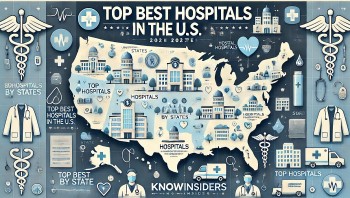Who Stands to Gain the Most from the One Big Beautiful Bill (H.R.1)?
The One Big Beautiful Bill (H.R.1), passed by the 119th U.S. Congress in 2025, is one of the most consequential and controversial legislative packages in recent American history. Framed as a budget reconciliation measure, it reshapes federal taxation, entitlement programs, energy policy, immigration enforcement, and military funding. While advocates claim the bill promotes growth and restores fiscal discipline, critics argue it accelerates inequality and slashes support for the nation’s most vulnerable communities.
Read more: How to Download the Full Text of the One Big Beautiful Bill (H.R.1)
 |
| One Big Beautiful Bill (H.R.1) |
High-Income Individuals and the Wealthy Elite
The bill extends and expands core elements of the 2017 Tax Cuts and Jobs Act. The top marginal tax rate remains frozen at 37%, and the income thresholds for higher taxation have been adjusted upward for inflation more aggressively than under previous law.
One of the most notable changes is the increase in the state and local tax (SALT) deduction cap, raised from $10,000 to $40,000. This disproportionately benefits high-income earners in states with higher property taxes, such as New York, California, and New Jersey. Wealthy homeowners in these areas will now be able to deduct far more, lowering their federal tax liabilities substantially.
Another provision—the "Trump Account Contribution Pilot Program"—offers families a $1,000 tax credit per child for contributing to tax-advantaged private savings accounts. This new vehicle is only accessible to those with the income flexibility to contribute regularly. As a result, it overwhelmingly benefits upper-middle and high-income families.
Additionally, changes to capital gains thresholds, estate tax exemptions, and business depreciation rules offer major tax avoidance opportunities for high-net-worth individuals. According to Congressional Budget Office (CBO) projections, households in the top 10% of the income distribution are expected to see after-tax income increase by approximately 2.3%, while the bottom 20% may see a decrease.
Seniors and Older Adults
Older Americans, particularly retirees with moderate to high income levels, see significant tax relief under H.R.1. The legislation increases the exemption threshold for Social Security income, allowing individuals over 64 to exclude up to $6,000 in benefits from federal income tax, and couples up to $12,000.
Phase-outs for this exemption begin at $75,000 for single filers and $150,000 for joint filers, with complete phase-out occurring at $175,000 and $250,000, respectively. While this doesn’t affect the very wealthy, it offers meaningful savings to retirees who fall into the upper-middle class. According to estimates, nearly 88% of seniors would be exempt from paying federal taxes on Social Security income, compared to about 64% under previous law.
Moreover, the bill does not cut Medicare directly, unlike earlier Republican proposals. This stability—combined with new deductions for retirement savings—solidifies older adults as clear beneficiaries.
Small-Business Owners and Entrepreneurs
H.R.1 includes a permanent extension and broadening of the Section 199A deduction, originally introduced under the 2017 tax law. This allows qualifying pass-through entities (such as LLCs, S-corporations, and sole proprietorships) to deduct up to 20% of their income.
The new version expands eligible industries, simplifies compliance, and raises the income threshold for full deductibility. This significantly benefits professional services, retail shops, franchise owners, and contractors who structure their business income as pass-throughs.
Additionally, a new deduction is introduced for tipped workers and those with significant overtime hours, capped at $25,000 per year for individuals with adjusted gross income below $150,000. While designed to support middle-class workers in the service and hospitality industries, it also provides indirect benefits to employers, reducing their payroll tax exposure and simplifying compensation structures.
Farmers, Ranchers, and Rural Communities
The agricultural sector receives substantial direct and indirect support in H.R.1. The bill increases federal subsidies for crop insurance, Price Loss Coverage (PLC), and Agriculture Risk Coverage (ARC) programs, totaling more than $52 billion over ten years. These programs stabilize farm revenue and reduce income volatility for producers of corn, soybeans, cotton, and wheat.
Reference prices, which determine when subsidies are triggered, are also raised by 11% to 21%, depending on the crop. This ensures more frequent and generous payouts during downturns.
Tax benefits for rural America include enhanced bonus depreciation for equipment purchases, permanent Section 179 expensing, and accelerated write-offs for land improvements. The legislation also earmarks funds for rural broadband expansion, farmworker housing credits, and food distribution infrastructure.
Altogether, these measures strengthen rural economies, making farmers, ranchers, and small-town businesses among the clearest winners under the bill.
Middle-Income Families and Working-Class Households
The bill’s effects on the middle class are mixed and vary significantly based on income level, family structure, and geography.
Positive changes include:
-
A modest increase in the standard deduction ($1,000 for individuals, $1,500 for joint filers)
-
Expansion of the Child Tax Credit to $2,500 per child, although with less refundability for lower earners
-
The tip and overtime deduction of up to $25,000 for qualifying workers
However, these benefits are counterbalanced by spending cuts:
-
Work requirements are added to Medicaid and SNAP, potentially removing millions from the rolls
-
Administrative burdens on benefit programs increase, reducing access and efficiency
-
Childcare and housing subsidies see no new funding, despite rising costs
Overall, while many middle-income earners may see tax reductions of a few hundred dollars annually, those relying on public programs or living in high-cost areas could see a net loss in household resources.
Defense, Immigration, and Law Enforcement Contractors
H.R.1 provides historic levels of funding for the Department of Defense, Department of Homeland Security, and associated contractors. Key appropriations include:
-
$150 billion increase in Pentagon budget, emphasizing nuclear modernization, artificial intelligence, and cybersecurity
-
$170 billion for Immigration and Customs Enforcement (ICE) and Customs and Border Protection (CBP), including physical border barriers, surveillance technology, and detention center expansion
Private contractors serving in defense manufacturing, military logistics, and enforcement technology stand to receive lucrative new contracts. Employment in defense hubs and border states is expected to rise, spurred by subcontracting and federal project spending.
Clean-Energy and Climate Industries
The bill eliminates many of the tax credits introduced by the Inflation Reduction Act for solar panels, wind farms, energy-efficient appliances, and electric vehicles. This repeal affects both producers and consumers, driving up costs and reducing demand.
Major clean-energy employers, especially in states like California, Texas, and Colorado, project job losses due to the reversal of investment incentives. A study by the Energy Futures Initiative predicts a potential loss of over 800,000 clean-energy jobs by 2030 if the credits are not reinstated.
These industries are clear losers under the bill, with minimal compensatory provisions.
Healthcare Providers and Vulnerable Populations
H.R.1 makes significant changes to public healthcare access:
-
Work requirements and asset tests for Medicaid eligibility
-
Reduced subsidies for ACA marketplace plans
-
Prohibitions on federal funding for gender-affirming care and most abortion-related services
The Urban Institute estimates that 11 million individuals could lose health coverage due to these provisions, with 7.8 million impacted through Medicaid rollbacks alone. Many hospitals, especially in rural or underserved areas, face revenue shortfalls as uncompensated care rises.
This results in negative outcomes for both healthcare providers and the vulnerable communities they serve.
Immigrants and Immigration Enforcement
Immigration policy in H.R.1 is sharply tilted toward enforcement:
-
Increases to deportation and detention budgets
-
Higher fees for visa processing and asylum applications
-
Further exclusion of DACA recipients from ACA access
While immigration control contractors benefit from increased funding, immigrant communities face new financial and legal obstacles, worsening their access to basic services and economic mobility.
Public Sector and State Governments
The bill shifts costs from the federal government to state governments in several key areas:
-
States must now pay 5% of SNAP costs, amounting to billions in new expenses
-
New administrative mandates for Medicaid and ACA compliance
-
Less federal funding for public health, housing, and education support programs
Wealthier states may manage the transition, but poorer states with high benefit utilization rates are likely to face budgetary crises. Public-sector unions and administrators also face increased strain.
Summary: Winners and Losers
Winners:
-
High-income individuals: Enjoy expanded deductions, lower effective tax rates, and new savings vehicles
-
Retirees: Benefit from Social Security tax relief and stable Medicare funding
-
Small businesses: Gain through pass-through deductions and payroll-based benefits
-
Farmers and rural economies: Receive billions in subsidies and infrastructure support
-
Defense and enforcement contractors: Obtain historic levels of funding
Losers:
-
Low-income families: Face benefit cuts, work requirements, and reduced safety net access
-
Clean-energy industries: Lose major tax credits and job opportunities
-
Healthcare providers: Deal with more uninsured patients and fewer subsidies
-
Immigrants: Experience tighter restrictions and greater costs
-
State governments: Bear more financial and regulatory burden without offsetting resources
While the One Big Beautiful Bill is branded as pro-growth and fiscally responsible, its redistributive effects heavily favor wealthier households, enforcement infrastructure, and capital-intensive industries. Meanwhile, its impacts on the working poor, healthcare access, clean energy, and immigrant rights raise critical concerns about the future direction of public policy and economic equity in the United States.
FAQs
What is the One Big Beautiful Bill (H.R.1)?
The One Big Beautiful Bill is a 2025 budget reconciliation package passed by Congress, combining major tax cuts, increased border and military funding, and cuts to social programs like Medicaid and SNAP. It’s officially titled the “Budget Responsibility and American Prosperity Act.”
Who benefits most from the One Big Beautiful Bill?
High-income earners, retirees with moderate to high incomes, small-business owners, defense contractors, and farmers receive the most direct benefits. The bill includes permanent tax cuts, expanded deductions, and massive federal spending in defense and agriculture.
Does the One Big Beautiful Bill help the middle class?
The bill offers limited benefits to middle-income families, such as an increased Child Tax Credit and standard deduction. However, cuts to healthcare and safety net programs may offset those gains, especially for households relying on Medicaid or SNAP.
What impact does H.R.1 have on low-income Americans?
Low-income families are among the biggest losers under the bill. Work requirements for benefits, reduced ACA subsidies, and restrictions on public assistance access could result in significant losses in income and healthcare coverage.
What changes does the bill make to healthcare and Medicaid?
The bill introduces work and asset requirements for Medicaid, reduces ACA premium support, and prohibits funding for gender-affirming care and abortion-related services. Over 11 million people could lose health coverage as a result.
How does H.R.1 affect small businesses?
The bill extends and expands the 20% deduction for pass-through businesses and introduces a new deduction for tipped and overtime workers. This significantly benefits LLCs, freelancers, and service-based small businesses.
Does the bill support clean energy or environmental programs?
No. The bill rolls back many clean energy tax incentives, harming solar, wind, and EV sectors. Industry experts estimate over 800,000 jobs could be lost in the clean energy sector due to these changes.
Will the One Big Beautiful Bill increase or decrease the deficit?
While marketed as fiscally responsible, the bill’s tax cuts and defense spending outweigh its savings. Independent estimates suggest it could increase the federal deficit by $2.4 to $2.8 trillion over ten years.
How are immigrants affected by this bill?
Immigrants face more legal and financial hurdles due to increased enforcement funding, higher visa/asylum fees, and ongoing exclusion from healthcare marketplaces like the ACA. Immigration enforcement agencies, however, receive substantial budget increases.
What should states expect from H.R.1?
States are required to cover more SNAP costs and manage stricter Medicaid administration, increasing their fiscal burden. While some states may benefit from military and border spending, others face budget strain from reduced federal support.























